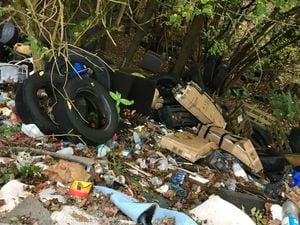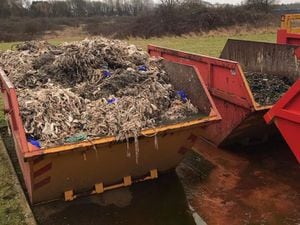Fly-tipping on rise across Shropshire despite lockdown ending
Fly-tipping incidents have rocketed to more than 6,300 in the last year across the county.

The figures, released by the Department for the Environment, Food and Rural Affairs (Defra), have prompted calls for farmers and landowners in Shropshire to protect themselves against the "blight on the countryside".
According to Defra's numbers, 5,380 incidents were recorded in Telford and Wrekin in 2020/21, up from 3,330 in 2019/20. In the Shropshire Council area, 1,004 incidents were logged this year - up from 888 the year before. In total, 2,166 more fly-tipping cases were recorded.
Last year, many put an increase in fly-tipping down to people doing DIY during coronavirus lockdowns. But rather than settle down as furlough ended and people went back to work, the numbers have carried on rising.
Residents have contacted the Shropshire Star to highlight the problem on several occasions in the last year, including in November, when tyres, empty Amazon boxes and other assorted rubbish was dumped in a lay-by on the A4169 Ironbridge bypass on Buildwas Bank. Litter-picker Rob Skinner said: "It is truly disgusting and an obvious environmental threat. It can affect ground water and wildlife.
"I have to say that the level of fly tipping is on an industrial scale. Laybys are some of the worst places I have seen, with people leaving human waste and alcohol containers there routinely."
Also in November, Shrewsbury man Jonathan Wells was fined for abandoning a waste site in Ludlow, leaving it to become a fly tipping hotspot. And in December 2020, more than 1,000 tyres were dumped at Bradford Estates, on the Shropshire/Staffordshire border on the A41.
“Fly-tipping is an unwelcome blight on our countryside and can represent far more than an inconvenience to victims of the crime,” said Rupert Wailes-Fairbairn, of rural insurance broker Lycetts.
“Incidents not only pose significant environmental and human health risks, but also a legal and financial burden for farmers and landowners.
“Although local authorities will usually pay the clean-up costs of clearing waste from public land, the responsibility for removing waste from private land falls squarely at the feet of the landowners. If they fail to do so, they can face prosecution.”
Clean-up bills per incident average around £1,000, according to the National Rural Crime Network, but large-scale incidents can cost upwards of £10,000.





